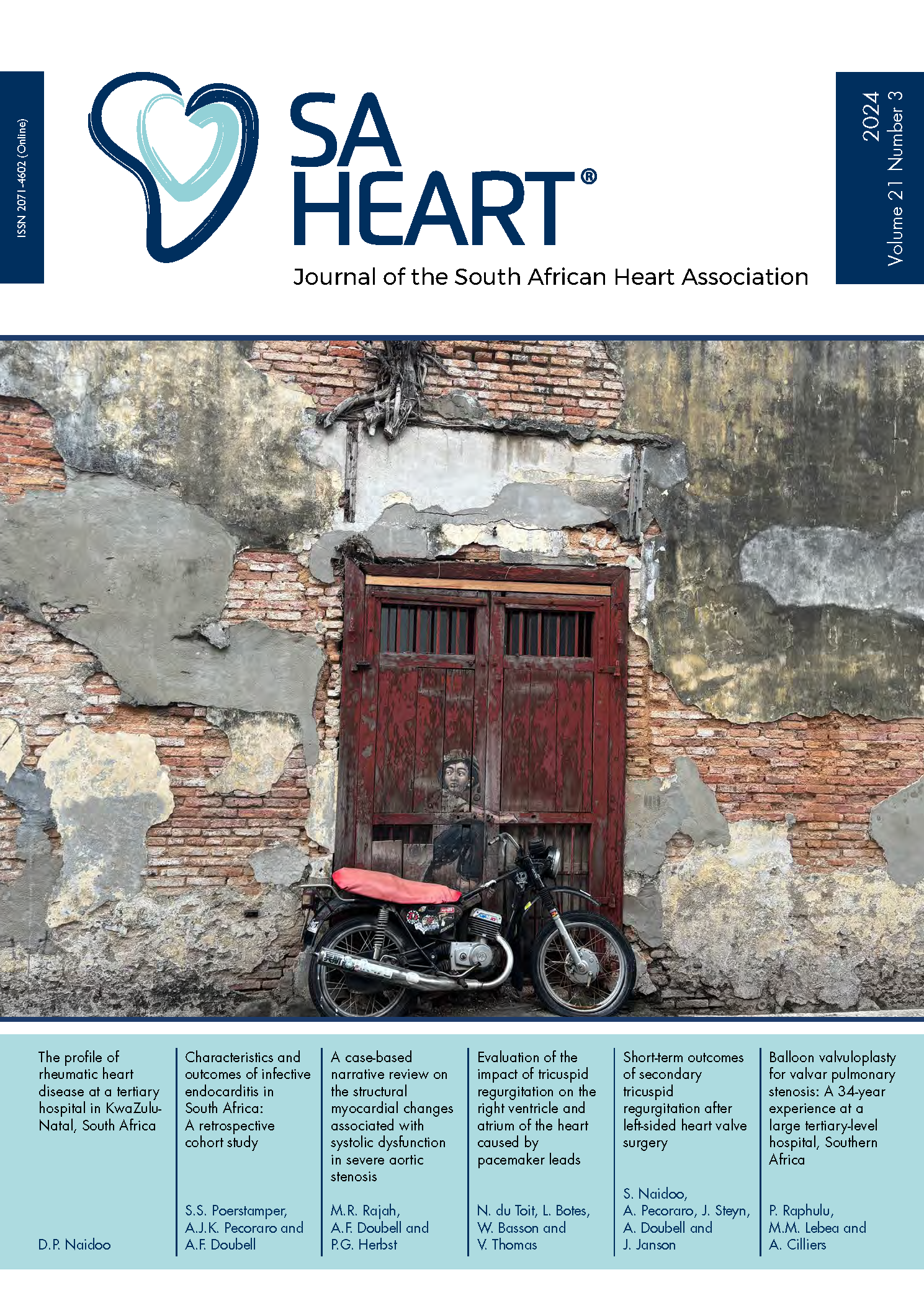Short-term outcomes of secondary tricuspid regurgitation after left-sided heart valve surgery
DOI:
https://doi.org/10.24170/21-3-6219Abstract
Background: Secondary tricuspid regurgitation (TR) is a common finding in patients undergoing surgery for leftsided heart valve disease. The indications for concomitant tricuspid valve (TV) repair have been progressively expanded based on data suggesting adverse sequelae for patients in whom secondary TR is not treated.
Method: This was a prospective observational study of patients undergoing left-sided valve surgery with at least mild TR. Eighty-three patients were enrolled between July 2019 - April 2021. Patients received either conservative management (no TV repair) or concomitant TV repair (TV repair) based upon a guidelinedirected, multidisciplinary team approach. Primary outcomes were freedom from recurrent TR, poor functional status, and mortality at 6 months. The secondary outcomes were to identify predictors of recurrent TR and compare no TV repair vs. TV repair outcomes in patients with moderate or severe pre-operative TR. Results: The mean age was 49 ± 15.5 years and 51.8% (43 of 83) were female. Thirty-seven (44.6%) had rheumatic heart disease. The most common procedures involved the mitral (50.6%) and aortic (28.9%) valves in isolation. Additional procedures were performed in 33 (39.8%) patients, including resection of the left atrial appendage in 21 (63.6%). Pre-operative moderate or severe TR was present in 34 (40.9%) patients, and TV repair was performed in 9 (10.8%) patients who all received rigid ring annuloplasty. At 6 months the 56 patients (67.5%) were free of significant TR, 14 (16.9%) were in a poor functional state and 72 (86.7%) were alive. Suggested predictors of recurrent TR at 6 months were female gender (OR 9.9, p=0.04), rheumatic leftsided valvopathy (OR 14.4, p=0.02), and elevated right ventricular systolic pressure (OR 1.1, p<0.01). An exploratory sub-group analysis did not reveal any primary outcomes differences between no TV repair vs. TV repair at 6 months, despite the latter group demonstrating more high-risk features.
Conclusion: Guideline-directed, multidisciplinary team approach for the management of secondary TR associated with left-sided valve disease produced good overall short-term outcomes that appeared similar whether or not the TV was repaired. Prospective studies with long-term outcomes are required to determine the optimal treatment strategy for secondary TR in patients undergoing left-sided valve surgery.
Downloads
Downloads
Published
How to Cite
Issue
Section
License
This journal is an open access journal, and the authors and journal should be properly acknowledged, when works are cited.
Authors may use the publishers version for teaching purposes, in books, theses, dissertations, conferences and conference papers.
A copy of the authors’ publishers version may also be hosted on the following websites:
- Non-commercial personal homepage or blog.
- Institutional webpage.
- Authors Institutional Repository.
The following notice should accompany such a posting on the website: “This is an electronic version of an article published in SAHJ, Volume XXX, number XXX, pages XXX–XXX”, DOI. Authors should also supply a hyperlink to the original paper or indicate where the original paper (http://www.journals.ac.za/index.php/SAHJ) may be found.
Authors publishers version, affiliated with the Stellenbosch University will be automatically deposited in the University’s’ Institutional Repository SUNScholar.
Articles as a whole, may not be re-published with another journal.
Copyright Holder: SA Heart Journal
The following license applies:
Attribution CC BY-NC-ND 4.0

